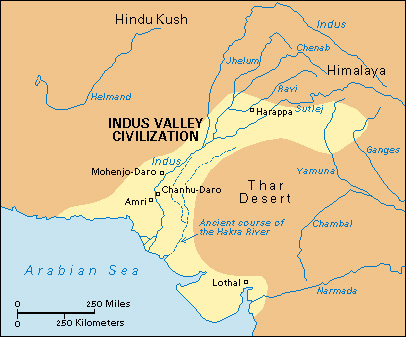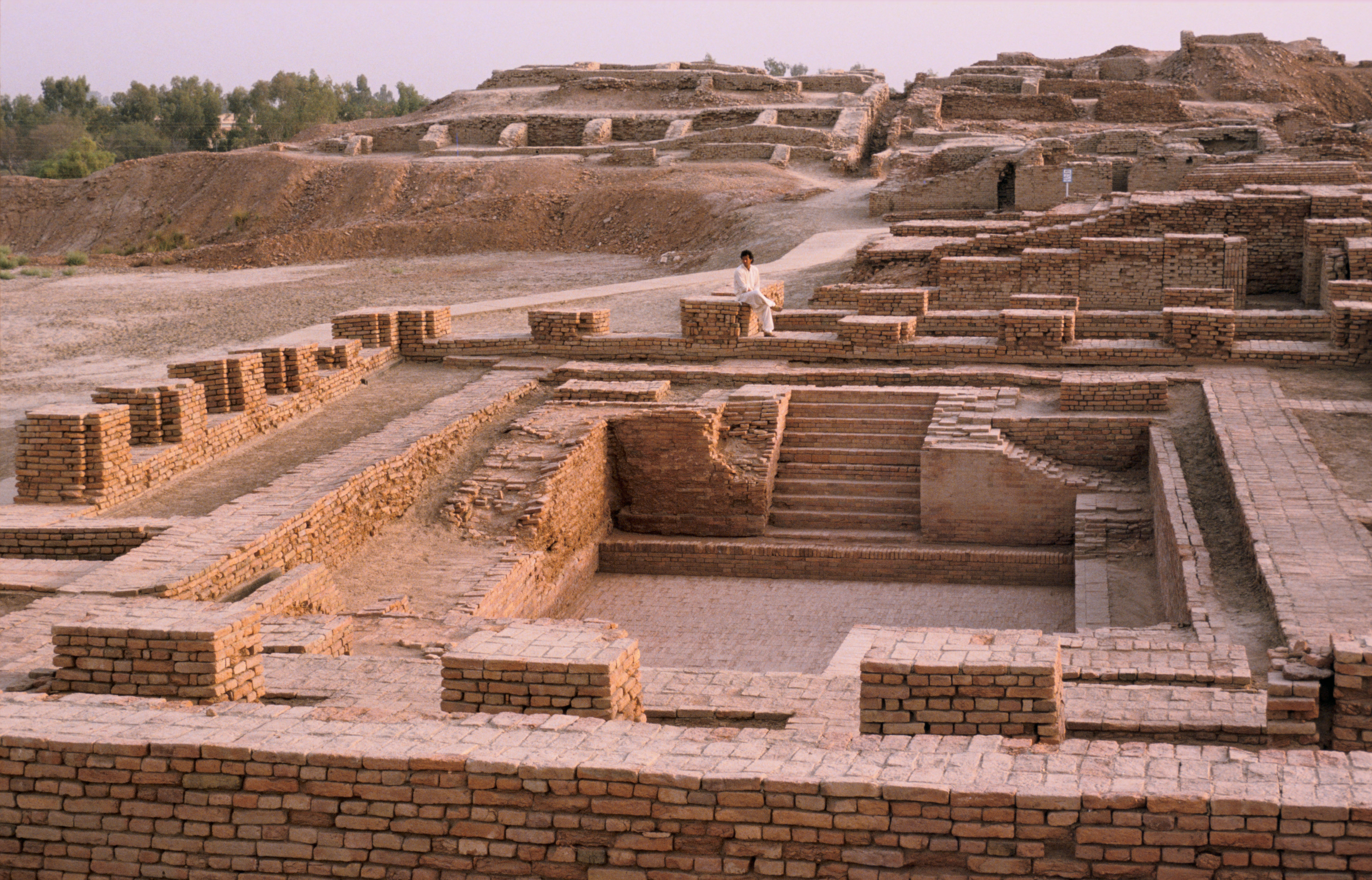Mohenjo-Daro is the ruin of an ancient city near the Indus River in what is now Pakistan. Workers discovered the site in 1922 during an archaeological survey of what is now the Sindh Province. Today, it remains among the best-known urban centers of the ancient Indus Valley civilization, which arose in the region about 4,500 years ago. The name Mohenjo-Daro means mound of the dead in the local Sindhi language. A large mud-brick Buddhist stupa (monument)—built later, around 200 B.C.—is also found near the site.

Archaeologists began large-scale excavations (digging) at Mohenjo-Daro in the 1930’s. Unlike Harappa, another ancient Indus Valley civilization city, Mohenjo-Daro includes many standing structures. The site is about 250 hectares (2.4 square kilometers) in size. Archaeologists divide the city into two areas called the Citadel Mound and the Lower Town Mound. A large trough between these two mounds suggests that a pathway existed between them. Archaeologists have discovered evidence of structures buried deep under accumulated silt from river floods. These signs indicate that the city was much larger than what has been excavated.
The people of Mohenjo-Daro erected their buildings on large mud-brick platforms, protecting them from seasonal floods. The Citadel Mound is a massive platform on which several structures were built. One structure, called the Great Bath, is a large pool with several rooms around its edge. Archaeologists believe this structure was used in rituals involving purification with water. Another section has several small, square structures that were built to allow airflow beneath a wooden floor. Archaeologists believe these buildings served as granaries. Similar buildings are found at Harappa.

Many residential buildings are found in the Lower Town Mound. This area also consists of a large mud-brick platform and many walls. Several main streets and side streets seem to divide the area into neighborhoods. The presence of as many as 700 wells may indicate that each neighborhood or compound had its own water source. Archaeologists have found evidence of industrial activity within the Lower Town as well as on its borders.
Mohenjo-Daro was located along important trade routes through the Indus Valley. The city controlled trade routes from Harappa in the north to Baluchistan and the lower Indus River delta in the south. Important trade items included gold, silver, copper, steatite (soapstone) and carnelian agate beads, steatite seals, and stoneware bangles.
Little excavation and research has been done at Mohenjo-Daro since the 1960’s. Many of the buildings there have been reconstructed due to damage from floodwaters. Salt crystals deposited by evaporating floodwaters expand to destroy artifacts and mud bricks. In 1980, the United Nations Educational, Scientific and Cultural Organization (UNESCO) declared the location a World Heritage Site. UNESCO considers such sites to be areas of unique natural or cultural importance.
